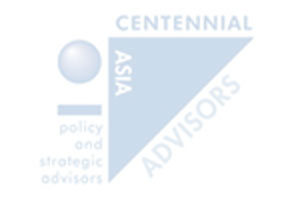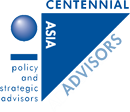Asian Insights
A summary of “Asian Insights” weekly update is published here. The full version is available through paid subscription. Please click here to register your interest. Our executive will get in touch with you.

Highlights from the CAA Weekly Table:
Asian economies face more challenges to growth as COVID infections and inflationary pressures rise. Policy is constrained but as infections peak and global demand improves, these economies are likely to see a rebound.
- China: Rising input prices are depressing margins and the resulting output cuts in some sectors pose a modest risk to growth. The currency is likely to keep appreciating gradually.
- India: The pandemic is easing, raising hopes for the recovery to regain momentum. However, we see the Rupee’s rise as unsustainable.
- Indonesia’s infrastructure fund is well-structured and should help boost infrastructure development particularly in the road sector which is a priority.
- Malaysia’s exports are surging, helping to support an economy reeling from a surging tide of COVID infections. However, the Philippines lacks Malaysia’s diversified export base and there has been little in the way of fiscal stimulus. Singapore’s strong momentum in the first quarter is likely to ease as manufacturing slows and the recovery in services may take longer to materialise given the recent reimposition of some restrictions on activity.
US-China contestation deepens, spelling difficulties for Asia
- After years of strategic advances in the Asia-Pacific region at the expense of the US, China is beginning to find itself on the backfoot. China’s responses to these setbacks are likely to produce a more troubled Indo-Pacific region.
- The US is mobilizing itself to compete with China with a revised set of defence spending priorities that target China. Strengthened alliances with Europe, Japan and South Korea together with a more accommodating India also boost the US position.
- China will not veer from its current approach, however. It will leverage off an expanded alliance with Russia and widen its carrot-and-stick approach to Asian countries, as well as to others. It is also likely to offer Asian countries a re-energised Belt & Road Initiative.
Political after-shocks from Covid-19 loom large
Given the mayhem it has caused, the pandemic is certain to produce longer term political consequences. The initial rally-around-the-flag support that incumbent leaders enjoyed has ended, giving way to deep popular discontent in several countries:
- As we reported previously, Malaysia is where the risk of a political backlash is greatest. IN the past week, the resentment against the political class has grown amid anger at the mishandling of the pandemic, suspicions of corruption and suggestions that the elites were given unfair advantages. The trust that has been broken will not be easily regained.
- Similarly, India’s Premier Modi and South Korea’s President Moon have seen their approval ratings fall sharply. Indonesia’s President Joko Widodo and Philippine President Duterte, however, have successfully maintained their popularity despite the ravages of the pandemic.
- Moon and Duterte have the fiscal space to step up fiscal stimulus and so could improve their political standing. Modi, however, is constrained, raising the fear that he may resort to beating the religious-nationalist drum to redeem himself with voters.

Highlights from the CAA Weekly Table:
- Asian political risks – watch Malaysia: There is rising resentment against the political class in Malaysia. With the tinder dry, a surge in COVID infections that could strain the healthcare system to breaking point or the embattled leadership’s manoeuvrings to prolong its rule could be the spark for instability.
- Asian economies: Lead indicators give us more confidence in our call for more upside in global demand for Asian exports. China’s growth momentum remains solid despite disappointing April data. With India’s recovery looking shakier, our nowcast forecast for 1Q21 growth has been revised down to just 1.4%. Indonesia, Thailand and the Philippines continue to struggle with the pandemic but some tentative positive signs are emerging.
Asia: Rising headline inflation but core inflation remains benign
- While headline inflation could remain elevated in the near term on higher raw material prices and supply bottlenecks, we still see a large amount of regional spare capacity keeping core inflation relatively benign.
- There are relatively higher upside risks to inflation in China where the output gap has closed and the extent of pass-through of cost increases is greatest, even as the extent of input cost inflation remains comparatively modest.
- Rising input costs are most salient in Taiwan, Malaysia and Vietnam but weak pass-through associated with firms’ pricing power limits the risk of a surge in inflation there.
- Higher food and energy prices later in 2021 could raise headline inflation in India and Thailand, both of which feature relatively high food and energy weights in their CPI baskets.
Singapore’s post-pandemic economic strategy could have gone further
- The Singapore government has lived up to its reputation for forward-thinking by issuing a report on its economic development strategy for the post-COVID future.
- There are some strong points in the Emerging Stronger Taskforce report. There is a welcome bias towards action that can yield near-term gains. Its mobilisation of economy-wide resources towards promising opportunities of the future raises the likelihood of discovering commercially viable products and solutions. Some promising areas of likely development have been identified. Singapore will be making a big push to be a leading carbon trading and services hub. The AgriTech sector will also be a focus of government support.
- That said, the report suffers from an inadequate examination of the Singapore economy’s structural weaknesses. Some of the big issues confronting Singapore are not addressed: What is the optimal rate of inward migration in Singapore? Why have innovation outcomes been so disappointing despite the massive inputs mobilised for innovation? Why are indigenous companies performing so poorly? What can be done about high business costs?
- This raises the question: Without these critical challenges being addressed, can its earnest and well-meaning recommendations really produce the best outcomes for Singapore?
